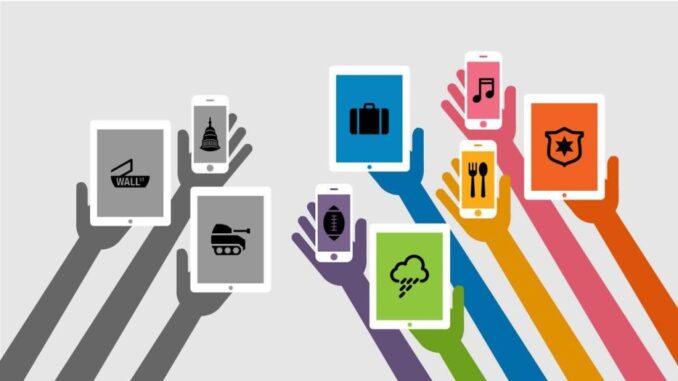
The world is a playhouse of different individuals and their different mindsets. Over 7.8 billion people reside in this complex world, and more than 170 million ardently use social media to stay connected. This means every professional is expected to be familiar with the core tenets of Digital Marketing. But what exactly is Digital Marketing?
Explained in simple terms, Digital Marketing is the promotion of products and services over the internet or any electronic media. However, according to the Digital Marketing Institute, “Digital Marketing is the use of digital channels to promote or market products and services to targeted consumers and businesses.”
People are exposed to use digital content, and they have been consuming it for a long time now. The traditional marketing approach is slowly vanishing, whereas, the digital marketing services are making are already making it big and soon will take over completely. Let us talk about it in-depth,
History of Digital Marketing
The first impressions of Digital Marketing came in the year 1990. The digital age took off with the aid of the internet and the development of the Web 1.0 platform. With the help of Web 1.0, the users were allowed to find the information but couldn’t share it on the web.
However, up until then, global marketers were still unsure of the digital platform. Times went on, and three years later in 1993, the first clickable banner went live, after which a company named Hotwired purchased a few banner ads for their advertising. Five years later in 1998, a revelation came in the form of Google, and everything changed for good. Along with Google, Yahoo also busted into the market and optimized the websites with authority. These two left all the small search engines behind.
The SMO services and digital marketing saw their first steep surge in 2006 when the traffic generated from search engines was reported to have grown to about 6.4 billion in one month. After this came Web 2.0, which allowed users to interact with other business houses and users. Web 2.0 gained immense popularity, and by 2004, digital marketing and advertising brought in around $2.9 billion in the US alone.
Now, before going any further, here are some of the major benefits of digital marketing,
The evolution of digital marketing must be forged with numerous opportunities. The technological developments put in this course have changed the way people perceive marketing. The three major factors that have transformed the current world include the internet, smartphones, and big data. Let us understand these aspects separately.
The evolution of the internet
In this current era of digitization, the internet has become an integral part of people’s livelihood. People have adopted internet services with both hands, whereas, the business houses have built onto it for promoting their business via social media like Instagram marketing services.
The Internet’s landscape transformed with a surge in the number of users. This meant in the emergence of search engines like Yahoo! In 1994, and Google in 1997. In the same manner, e-commerce sites like Amazon and eBay laid their foundation in 1994 and 1995 respectively.
For digital marketing trends, email was the first stepping stone as it acted like an outbound marketing tool joining the arsenal of the likes of TV, radio, telephone sales, and print advertisements. Soon internet immersed into the minds of users, and marketers used SEO techniques like keyword stuffing, tagging, and backlinks to boost their website’s and web page rankings.
Big Data
The information when transformed from text-based to digital is also termed as Big Data. A study made in 2000 found that digital information was the rapidly growing type of unique digital information produced, and Big Data was the new name given to this.
As soon as 2000 started, innovations started to make all the right noises. Digital media was already replacing its counterparts like paper, film, and optical (DVD and CD). This led to the discoveries in data recording and storage technology that made Big Data an irreplaceable resource for marketing.
After 2001, a greater emphasis was placed on inbound marketing through user-centered design, information sharing, and collaboration. The revolution meant the introduction of social media sites like LinkedIn in 2002, MySpace in 2003, Facebook in 2004, and Twitter in 2007. The introduction of these platforms helped users share personal data online. However, with a lack of knowledge about the internet, these social media platforms were unable to meet the desired traffic.
With the help of Big Data, it is possible to track patterns and trends of human behavior, and its role is on a gradual increase. At the same time, data-driven marketing has also gathered enough momentum.
Smartphones
In the current era, living without a smartphone is a sheer understatement. These devices have enlarged the digital marketing structure to a significant extent. Smartphones have overtaken laptops, PCs, and established themselves at the top of the ladder.
Earlier in the 1980s and 1990s, mobile phones were meant for nothing but talking. However, opportunities galore once high-end phones like BlackBerry in 2003 made it to the market. It was a revolution back then as it supported email, text messaging, web browsing apart from simple calling. BlackBerry was tailor-made for business professionals until 2007 when the smartphones entered the battleground.
The world is now in our pocket. 4G, 5G, and much more to come in the near future, the future of digital marketing looks blossoming and agile.
Conclusion: The Internet has taken the world by storm. The old forms are expected to wipeout as digital marketing is all set to take over. Therefore, choose the right media channel to promote your business and generate a high rate of interest.

Leave a Reply